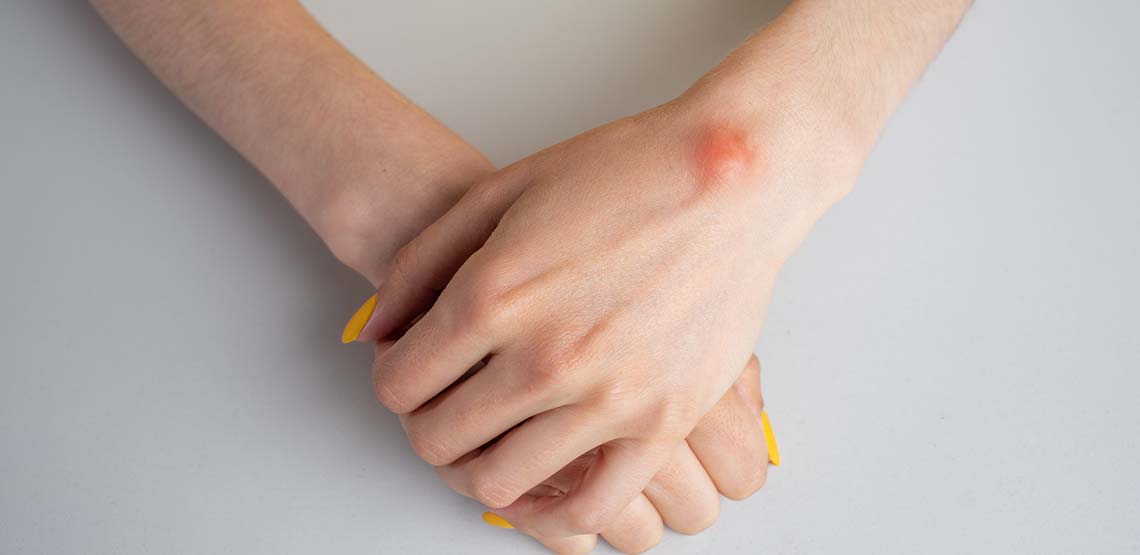How to Get Rid of Lipomas
A lipoma is a fatty tumor that sits between the underlying muscle and the skin. Although a lipoma is called a tumor, it is not cancerous. Lipomas do not require treatment, but some people choose to have the lipoma removed for cosmetic purposes or because it has become bothersome. In this article, we take a look at how to get rid of lipomas and which treatments are often used.
What is a Lipoma?
A lipoma is often a slow-growing lump made of fat tissue. It typically is not painful and may feel rubbery. Lipomas can grow anywhere on the body. But the growth is most commonly found on the arms, thighs, back, abdomen and shoulders.
The size of a lipoma can vary. According to the Mayo Clinic, most lipomas are about 2 inches or less, but they can grow and become much larger. Some people may have more than one growth.
4 Ways to Get Rid of a Lipoma
We will discuss how to get rid of lipomas, but it is good to know that not everyone who has a lipoma gets treatment. If the growth is not bothersome, your doctor may suggest taking a watch-and-see approach until the lipoma gets larger. In other cases, an individual may want to remove the lipoma. Below are the most common methods to get rid of a lipoma.
1. Surgical Removal
According to the American Academy of Orthopaedic Surgeons, surgery is the best treatment to remove all of the lipoma. A few different approaches may be used depending on the location and size of the lipoma.
Typically, a technique called minimal excision surgery is recommended, which results in less scarring than when making a larger cut. A small cut is made in the skin, and the doctor squeezes out the lipoma. The surgery is performed on an outpatient basis, which means patients go home the same day. If the lipoma is large, the surgeon may need to make a larger incision to remove it.
Usually, surgery to remove a lipoma does not cause complications, but bleeding and infection are small risks. Scarring is typically minimal. Recurrences usually do not occur after surgical removal.
2. Lipolysis Injections
A newer option to remove a lipoma without surgery involves lipolysis injections. The injection contains phosphatidyl choline/sodium deoxycholate. The chemicals help dissolve subcutaneous fat. Similar injections have been used to get rid of excess fat under the chin.
According to research in the Journal of Cutaneous and Aesthetic Surgery, lipolysis for the treatment of lipomas needs further studies to determine if reoccurrence is more common than with surgical removal. The most common side effect is bruising.
3. Liposuction
Liposuction is used to remove pads of fat from the body. In some instances, it may be an option to get rid of a lipoma. The procedure involves making a small cut into the lipoma and inserting a needle and syringe attached to a liposuction machine. The machine sucks the fat cells out.
According to the Cleveland Clinic, people who have liposuction to remove a lipoma tend to have a higher rate of reoccurrence than surgical removal. Side effects of liposuction include swelling and bruising.
4. Steroid Injection
Although not one of the main treatments for lipomas, steroid injections may be an option. A steroid injection does not usually remove the entire lipoma, but doctors may recommend doing an injection to shrink the size of the lipoma to make it easier to remove surgically.
Related Search Topics (Ads)
Do Alternative Treatments Work?
Now you know about how to get rid of lipomas, but you may wonder about alternative options. Because a lipoma is fatty tissue that grows under the skin, many types of alternative treatments, such as ointments or topical creams, do not work to remove a lipoma. Topical creams do not penetrate the skin deeply enough to dissolve the fat cells.
There are ultrasound devices used at home that are marketed to remove a lipoma, but there are currently no studies that show that these at-home devices work. While an ultrasound may penetrate the skin deeply enough to impact fat cells, at-home devices are not likely strong enough to do so.
When Should You Consider Having a Lipoma Removed?
Since a lipoma is not cancerous, treatment is not needed. But you may want to consider having a lipoma removed in some cases, such as the following:
- You are in pain. Occasionally, a lipoma can grow large enough that it presses on nerves nearby and causes pain.
- The lipoma is large. If a lipoma is large and starting to interfere with the movement of an arm or leg you may want to get it removed.
- It continues to grow. Some lipomas grow to a certain point and stop. But if it appears your lipoma is continuing to grow, you may want to have it removed before it becomes harder to cut out.
- You do not like how it looks. In some instances, you may not like how a lipoma looks and want to have it removed for cosmetic purposes.


